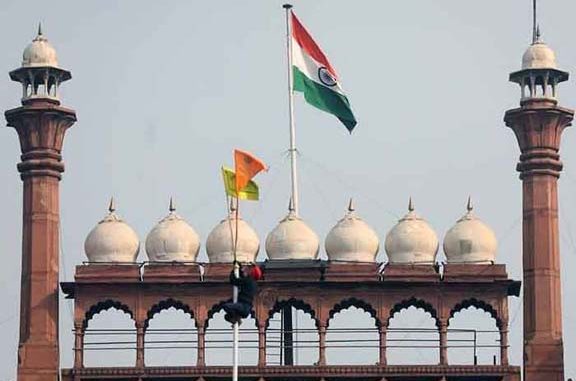
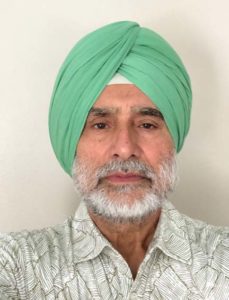
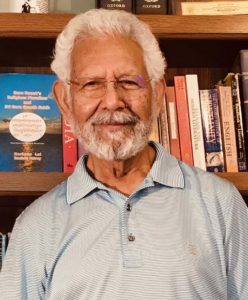
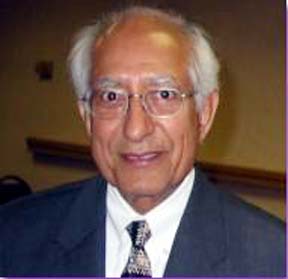
On January 26, 2021, when Indian Republic Day celebrations were taking place at Rajpath, New Delhi – and the world Sikh community was preparing to celebrate GuruTeg Bahadur’s400thbirth anniversary – a young Sikh farmer from Punjab‘s heartland was hoisting the Nishan Sahib on Lal Qila in Old Delhi. He was protesting, apparently, with the farmers’ march against India‘s new agricultural laws. Indian media, politicians, and numerous observers were shocked at the spectacle. Some thoughthis action a disgrace to the Red Fort; some considered it a desecration of the Indian Tiranga flying on this monument. And some saw it as tainting of the Republic Day and an embarrassment to the country. We have a different take, however. The young Sikh’s defiant feat was none of the above. He was seeking to achieve a very different objective unrelated to the farmers’ rally. In part I of this two-part article, we want to explore implications of his daring act beyond his role in the farmers’ march – to reframe his deed as an expression of the Sikh community’s grievances against authoritiesof the past and present. We focus on the role that Lal Qila as the Mughal Emperors’ palace has played in Sikh history by citing events that are indelibly etched in the collective Sikh memory. We also cite those events to remind India and the worldof the sacrifices made by the Sikh Gurus and their followers for the religious freedom of all people. With these words, we especially dedicate this article to Guru Teg Bahadur on his quadricentennial. In part II, we offer a few suggestions about how the Sikh community’s grievances embedded inits history may be mitigated. Since the Sikh communityis inevitably part of other Indian communities, its history can’t be separated fromtheir histories. Therefore, the suggestions we offer are for India to work on and apply as feasible, with the willingness and cooperation of all communities, since all Indian communities’ function within the Indian cultural, legal, and geographical boundaries.
I.Lal Qila’s History with Sikhs
It was no coincidence that on Republic Day, aSikh – not a Hindu, Muslim, Christian, Jain, Buddhist, Baha’i,or Parsee – climbed up the flagpole and, with other Sikhs and Hindus cheering from down below, hoisted the Nishan Sahib on Lal Quila. Then, it would be relevant to ask: Is there something about Lal Qila that galvanizes Sikhs, in particular, moresothanother Indians?
Most Indians may not know the Sikh connection with Lal Qila (also “Lal Kila,” or “Red Fort” in English), rather two Lal Qilas, as the Mughal Emperors’ principal residence, court, and seat of power.With the change of the Mughal capital, the first one in Agra was superseded by the secondin Delhi. Both affected the course of Sikh historyto a very great extent.
Lal Qila has beendesignated a national monument, a UNESCO World Heritage Site, and the Indian primeminister’s venue for the Independence Day celebration. It is also a significant part of the MuslimIndian legacy,contributingmuch to Indiain terms ofetiquette, dress, food, music, architecture, art, craft, language, and literature.
However, that legacy often overlooks the consequencesand collective memories that mostnon-Muslims associate with this great monument.From Lal Qila, the Mughal Emperors deployed their might to subjugate the Indian subcontinent, and from there emanated the power wielded by their dominions. Hundreds of years later, Sikhs, Hindus, Parsees,and many others, while visitingLal Qila, are reminded ofthe crueloppressionof their cultures and religions, violent takeovers of their lands, enslavement, mass genocide, and mass proselytization.
Indians visiting this monumentwhile admiring its grandeurhark back to the Mughals proclaiming and committing atrocities – far back to Babar, first Mughal Emperor, much before Lal Qila. Babar (or Babur), a descendant of Timur or Tamerlane and a Sunni Muslim, invaded India and established his dynasty in 1526.Guru Nanak, the founder of Sikhism, refers critically and propheticallyto the horrific acts committed by the first Mughal Emperor, describing himas “the Agent of Death,” who ruthlessly massacred and pillaged Indians, causing endless sufferingin the subcontinent.
Now we provide a brief outline showing the Lal Qila connection with the course of Sikh history.The instances cited below to provide context to better understand why this national monument and historic seat of the Mughals triggers horrible memories for Sikhs and does not let them forget the past.
Lal Qila – Mughal Court, Agra: Emperor Jahangir
Guru Arjan Dev, 5th Sikh Guru, executed in Lahore, May30, 1606
Guru Arjan Dev was summoned to appear in Lahore court before one of Emperor Jahangir’s representatives. He was accused of promoting a belief system contrary to Islam –the sacred Sikh scripture he had compiled did not conform to the Holy Quran. And it didn’t help matters that the Guru was also friends with the Emperor’s rebellious son Khusrau and that the new religion even was attracting many Muslims.Therefore,as dictated by the imperial protocol or desire, he was arrestedat Lahore Fort, interrogated, asked to embrace Islam,and, on his refusal, executed most cruelly. Besides being subjected to other cruelties, the Guru was made to sit on a burning hot ironplate, and burning hot sand was poured on his head until he died. Guru Arjan Dev,a prolific poet, philosopher, and visionary,compiled the Sikh scripture, the Guru Granth Sahib, in 1604. He inspired his followers to emulate divine attributes and gave a message of love, hope, justice, and prosperity for all.
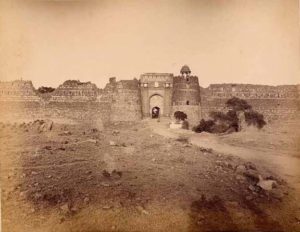
Lal Qila – Mughal Court, Delhi:Emperor Aurangzeb
Guru Teg Bahadur, 9th Sikh Guru, and his devotees executed in Delhi
Aurangzebruled India for almost half a century (1659-1707). Adevout Sunni Muslim, he declared and enforced Islam as the law and religion of his empire.His goal was to make India an Islamic state, meaning, according to Sir Jadunath Sarkar,”the conversion of the entire population to Islam and extinction of every form of dissent.”
Aurangzeb viewed Hindus and Sikhs as his natural enemies. They were required to pay jizya tax for being Hindu or Sikh.Hegalvanized all his religious and secular powers to rule and convert them and, if needed, subjected them to unheard-of atrocities, culminating in death.
From Lal Qila,Aurangzebannounced the following orders that transformed Indian history in general and Sikh history in particular.
November 5, 1675
Three followers of Guru Teg Bahadur were executed in Chandni Chowk, Delhi, as ordered by Aurangzeb because they refused to embrace Islam:
- Bhai Mati Das was tied between two posts and sawedoff intotwo halves from head to loin.
- Bhai Sati Das (Mati Das’s brother) was hacked to death, limb by limb, piece by piece.
- Bhai Dyal Das was tied and thrown into a cauldron of boiling oil.
Guru Teg Bahadur was made to witness these gruesome killings of his followers.
November 11, 1675
Six days later,Guru Teg Bahadur was beheaded publiclywithin walking distance from Lal Qila.
Reason?He had petitionedthe Emperor on behalf of helpless Kashmiri Brahmins, Satnamis, and other non-Muslims from Indiathat their forced conversion to Islam and “the Quran or the sword”policy be stopped, and that they be allowed to live by their own religious beliefs. The Guru also said”No” to his own conversion to Islam.
Guru Gobind Singh, 10th Sikh Guru, and his sons
December 22, 1704
Subsequently, Aurangzebdeployedhis vast administrativemachinery to go afterGuru Gobind Singh,10thSikh Guru, and his four sons. The Guru had to sacrifice his two older sons to battle to protect his faith and his people:
- Ajit Singh, 17years old, died fighting the Mughal army in Chamkaur.
- Jujhar Singh, 14years old, also died on the same battlefield.
December 27, 1704
Five days later, the remaining family of Guru Gobind Singh was murdered in the custody of Aurangzeb’s Governor of Sirhind, Punjab:
- Zoravar Singh,seven years old, was bricked alive and then beheaded in Sirhind.
- Fateh Singh, five years old, was bricked alive, along with his brother,and then beheaded.
Their crime? They said “No” to their conversion to Islam. Mata Gujri, the mother of Guru Gobind Singh, died along with her two grandsons.
Perpetuation of Aurangzeb’s Atrocities
Aurangzeb, the last Great Mughal, died on March 3, 1707, but his laws and edicts didn’t die with him. They were continued by his successors and those who derived power from the imperial throne. The tradition of Mughal atrocities remained unbroken for a long time.
Lal Qila, Delhi:Emperor Bahadur Shah I
December 10, 1710
Bahadur Shah proclaimed a Sikh genocide – ordering that the Sikhs be murdered wherever they are found. Reason: The Emperor had issued a “capture or kill”order for Sikh general Banda Bahadur, but the great Sikh had disappeared despite all the Mughal forces hunting for him.
Banda Bahadur (earlier named Madho Das, a Hindu recluse)was anointed a Sikh warrior by Guru Gobind Singh before he died in 1708.He had pledged to fight against the oppressive Muslim rule.
Lal Qila, Delhi: Emperor Farrukhsiyar
Banda Bahadur, his family, and 714 Sikhs
February 29, 1716
Banda Bahadurwas captured by the Mughal army and brought to Lal Qila, Delhi, along with his wife Sushila Devi (Princess of Chamba) and their 4-year-old son Ajay Singh. Sushila Devi committed suicide when she was forcibly separated from her son and ordered to submit to Emperor Farrukhsiyar’s harem. The same day a large number of Sikhs were massacred. Their headswere arranged in pyramids at the gates of Lal Quila. And he hung up the bleeding heads of the murdered Sikhson Lal Quila’s walls, as wellason trees and buildings leading to Chandni Chowk, Delhi. 714 Sikhs were beheaded publicly, 100 each day. Not a single person accepted Islam or asked for mercy.
June 9, 1716
The Moghul ruler brought Banda Bahadur to the Qutab Minar area.There, his 4-year-oldson, Ajay Singh, was slain in front of him. And the executioner took out little Ajay’s throbbing heart and entrails and thrust them into his father’s mouth. Banda shut his mouth and remained unmoved.
Then Banda Bahadur was executed.Here is an excerpt from a witness account letter describing Banda’s execution. C. R. Wilson,an East India Company representative and guest of the courtwrote to the British Viceroy:
First, with a dagger his right eye was removed.
Then his left eye was turned out with dagger.
Then his both feet were cut.
Both arms were chopped off.
Then with pincers, his flesh was cut off bit by bit.
Then his legs, nose,and ears were cut one by one.
Then his brain was blown out with sledgehammer.
Last of all his body was cut topieces.
Farrukhsiyar’s Edict: Convert to Islam or die-1716
Emperor Farrukhsiyar ordered Sikhs to convert to Islam or die.He offered a reward for each head. MostSikhs retreated to jungles.An East India Company envoy traveling from Delhi to Lahore saw pyramids of Sikh skulls along the highway. The Mughal government declared the Sikhs extinct.
Many more were the atrocities perpetrated by the Mughals. The culture of cruelties, firmly established, continued its course, with Lal Qila as the ruling throne of Sunni Islam.
Lal Qila capturedby Marathas in 1757 and Sikhs in 1783
It would be pertinentalso to add that, during the long Mughal rule, c.1526-1857, two times the Sunni Muslim emperorslost Lal Qila to Hindus and Sikhs.Here is a brief account of both.
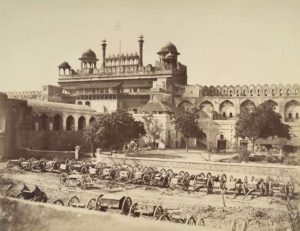
Saffron Hindu flag hoisted on Lal Qila:The Maratha Victory, 1757
The great Maratha King Shivaji posed the only other notable resistance to Aurangzeb’s tyrannic rule. He fought and won many wars against the Mughals. The Mughal-Maratha Wars or the Deccan Wars were fought from 1680 to 1707.
After Shivaji’s death, his son Sambaji also stood up bravely against the Mughals until he was captured at Sangameshwar in February 1689. Sambhaji and his prime minister Kavi Kalash (a Brahmin) were tortured to death. It took over a fortnight to kill them.
The process of killing them included plucking their eyes and tongue, pulling their nails, and removing their skin. Sambhaji was finally killed on March11, 1689, reportedly by tearing his front and back, beheading him, and then hacking his body to pieces at Tulapur on the banks of the Bhim river near Pune.
But after Aurangzeb’s death, the Marathas rose again and started their expansion toward the north. They conquered the land up to Punjab and beyond as far up as the Khyber Pass. In 1757 they hoisted their Hindu saffron flag on Lal Qila, Delhi.
Nishan Sahib hoisted on Lal Qila: The Sikh Victory
March 11, 1783
In 1783,Baghel Singh, Jassa Singh Ahluwalia, and Jassa Singh Ramgariah united their forces into a joint Sikh army,defeated the Mughal army, conquered Delhi, and hoisted the Sikhflag on Lal Qila.
Subsequently, once Delhi was under their control, they built sevenhistorical Sikh Gurdwaras in Delhi, the most important of which are:Gurdwara Bangla Sahib, near Connaught Place, memorializing Guru Har Krishan; Gurdwara Sis Ganj,in Chandni Chowk, memorializing Guru Teg Bahadur;and Gurdwara Rakab Ganj, near Parliament House,all commemorating Guru Teg Bahadur.
Nishan Sahib vis-à-vis Lal Qila
Unmistakably, the above portrait of the Mughals,enthroned in Lal Qila, should propel us Indians to ask:
- How could a monument that reminds us of centuries of oppression, forced conversions, and destruction of our people be so respect worthy as writers, scholars, and politicians would have us believe?
- How does Lal Qila represent Indian culture andits values?
- And howdid the hoisting of the Sikh flag by the young Sikh on Republic Day disrespect the Indian Tiranga or the monument itself?
To clarify, the Nishan Sahib is not the flag of so-called Khalistan. It is the Sikh flag, the flag of Khalsa (the Sikh community), hoisted on all Sikh gurdwaras and numerous other memorable Sikh places in India and the world.
The Nishan Sahib is a symbol of bravery and protection of the persecuted. It is hoisted at the China border, Pakistan border, and wherever Sikh soldiers are protecting India.And this January 26, the Nishan Sahib – along with the Indian national flag – was hoisted in front of the Sikh battalion marching on Rajpath, New Delhi, and saluted by both Prime Minister Modi and President Kovind.
Furthermore, just a peek into history – the Sikh flag was hoisted all over Kashmir, Leh, Ladakh, and Aksai Chin when Sikh General Zoravar Singh conquered those areas.
And, finally, to return to the young Sikh farmer’s act of hoisting the Sikh flag, it was a symbolic attempt at cleansing the Indian psyche, particularly the Sikh, of the gory past that harbors in it andhaunts it. It was his protest against the nightmares of Sikh history in particular, and Indian history in general,associated with this national monument. This unfortunatehistory brings us to the second part of the article.
II. ecommendations to Deal with the Intercommunal Baggage of History
That India is perhaps the world’s most diverse country is not an overstatement. In its diversity – ethnically, culturally, linguistically, and religiously –Indiais more like a continent. That Indians share a common history is true, but theirreligion, language, state know their communitiesor ethnicity have their distinctpasts, too. And those histories – often shaped byself-centered/communal interacting, intersecting, and relating with one another – have primarily contributed to the making of numerous challenges facing modern India.The most severechallenge that India must contend with is the effect of religion and history on intercommunal relations. As individuals, we all have to come to terms with our past – with what we have done and what has happened to us.Much in the same sense, India as one nation has to come to terms with its past, that is, its cumulative history. India’s past is a mammoth story of its achievements and failures. It includes, too, what has happened to its communities and what the communities have done to one another, resulting in countless grievances against one another.In other words, India has to deal with its histories of various communities, especially the conflicting communal histories. Let us call it the intercommunal baggage of the past. We believe that religion and history have shaped India’s intercommunal relations over the centuries and are an essential part of Indian life. WhileIndian democracy is secular by and large, the practice of secularism is often at odds with people’s religious sentiments and their politics. Unless one religious community is willing to respect another religious community with a divergent view of history, India will continue to be confronted – as it has been until this day – with challenges from any society based on their grievances. This confrontation will impede the progress India has made as a country and democracy. Therefore, we would like to offer the following suggestions for India:the government, political leaders and reformers, civic and religious organizations, historians, academics, literati, and the media. If practiced, these suggestions will significantly lower socio-religious tensions and increase mutual understanding among religious communities, e.g., Hindu vs. Muslim, Muslim vs. Sikh, and Sikh vs.Hindu.And their practice, evolving continually, will creategreater cohesiveness and harmony in Indian society and, on the whole, make the country a better and more prosperous democracy:
- Provide an unbiased and updated version of India’s cumulative history.Make sure it is free from the imperialistic biases traditionally built into it and the Indian education system. Incorporate in it the content/themes/areas previously neglected, disparaged, or understated.
- Educate all Indians about India’s cumulative history, as far back as feasible. Include in itthe social, political, and religious history of each religious community.Thus, each communitywill know not only its own historybutalso other communities’ histories. As a result, they willlikely develop a new and positive understanding of one another.
- Create awareness among peopleabout the unsavory aspects of imperialism, Mughal as well asBritish.
- Teach students to critically examine Indian histories written from the imperialistic point of view– which extoll the oppressors’cultures, arts, literatures, philosophies, and judgments, as well as their other contributions, and de-emphasize theiratrocities.
- Help minimize communal conflicts, mainly Hindu vs Muslim, Muslim vs Sikh, and Sikh vs Hindu, by spreading awarenessthat the ancestors of a considerable majority of Indian Muslims or Indian Sikhs wereHindus.Simultaneously, create awareness that many of those Muslim-convert ancestors, too, were victims of the Mughal power like other Hindusand thattoday’s Indian Muslimsshouldn’t be blamed for what the imperialistsdid to Hindus, Sikhs, and others.
- Create consciousness in the country that all Indians are equal beforethe law, irrespective of their religion or community,and must be treated equally and held responsible for their conduct,not that of their ancestors.
- Launch a new tradition in schools to celebrate and learn community histories.Start with the Sikh History Month, for example,in which every year students will learn about Sikhs and Sikhism. Develop this tradition by choosing another month for another community. Thus, students will learn about other communities and religions in a positive spirit.
To conclude, most Indians carry the baggage of their history. How big their baggage is depends on who they are; that is,their baggage depends on their community, ethnicity, religion, and their perceptions. Hindus, Muslims, Sikhs, Christians, Jains, Buddhists, Parsees, Jews, and others have all their unique histories that have shaped their communities. They tend to believe that they are significantly different from others because they belong to a different community. But the truth is that they all being Indian have so much in common, much more to connect them than to divide them.
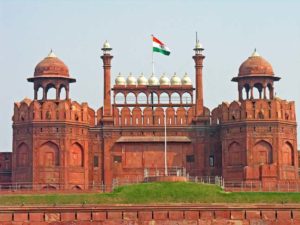
We sincerely hope and trust that India – i.e., the Indian government and its opposition; leaders, writers, and media of the right, left, and center; all diverse religious organizations; and Indian society – will find our suggestions helpful in devising new ways to deal with the divisive issues of history and religion.
And we believe that an updated cumulative history of India, which includes records of different religious communities, will enlighten Indians about themselves and, more importantly, result in alleviating the social and religious tensions amongst and between various communities. That willlead to a harmonious multireligious, multiethnic, and secular democracy and a more progressive and prosperous society in India.
(The authors- Sajjan Singh Dhaliwal is a retired engineer and lives in Charlotte, North Carolina, USA. Contact: sajjan@jasamgroup.com. Roshan Attrey is a retired English professor and lives in Charlotte, North Carolina, USA. Contact: rattrey@aol.com. Harbans Lal is a retired professor of Pharmacology and Neuroscience. He lives inDallas-Fort Worth, Texas. Contact: harbansl@gmail.com





Be the first to comment